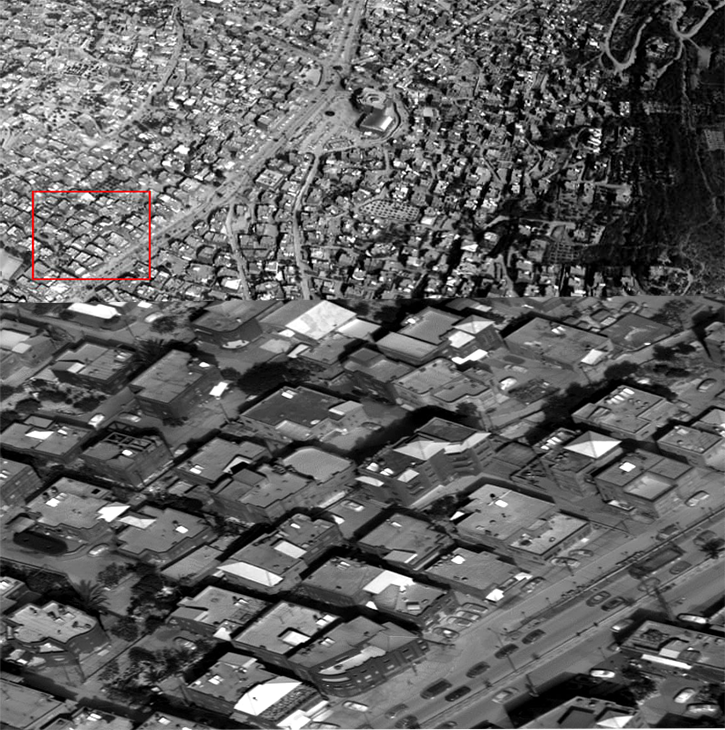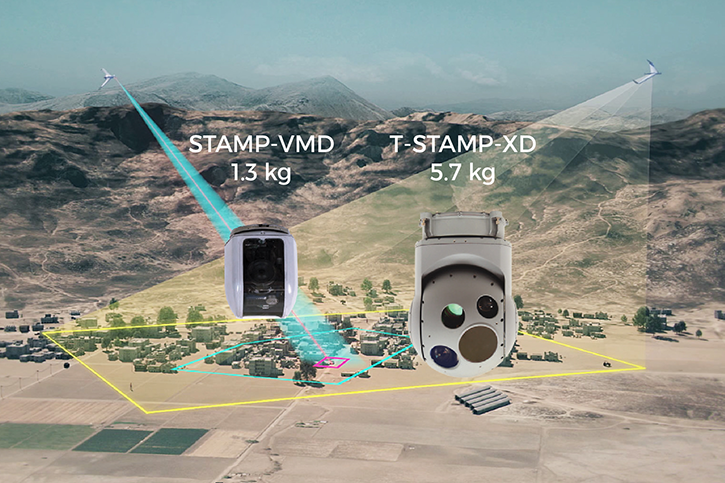In a trend to improve wide-area persistent surveillance (WAPS) beyond existing capabilities, Israel’s defense industries unveil groundbreaking, lightweight WAPS systems designed for small, tactical unmanned aerial systems (STUAS). These platforms are designed to operate with tactical forces and provide intelligence support to the units in direct contact with the enemy.
At the Singapore Airshow Rafael unveiled today the MicroLite, a small multi-sensor payload developed by Rafael and carried on Aeronautics’ Orbiter 4, demonstrating the synergy between Rafael’s EO capabilities and Aeronautics’ aerial platforms.
Utilizing Orbiter 4’s 24-hour mission endurance capability MicroLite applies a gimballed-turret design, which enables a horizon-to-horizon field of regard. The 11 kg payload comprises HD TV color camera and high-resolution Midwave Infrared (IR), to enable day and night operability. In addition, when a suspected target is spotted the same payload can also designate targets with a laser.

The system uses onboard data processing and storage providing advanced image processing in real-time. By continuously monitoring a large area, MicroLite creates a wide footprint, by which the entire area is continuously revisited at a very high rate, enabling simultaneous high-resolution tracking and investigation of multiple targets, including small targets. Developed by Rafael based on the anticipation of customer requirements, MicroLite has been integrated with the Orbiter 4 and is expected to begin flight evaluation.
IAI also presents the Wasp, just above half the weight of MicroLite, Wasp is a smaller sensor for wide-area persistent surveillance that implements Wide Area Motion Imagery (WAMI) to detect moving targets, based on high-resolution visual imagery delivered by its sensors in the day and at night. Wasp is designed to operate with IAI’s BirdEye 650D small tactical UAS.

Controp Precision Technologies offers the smallest and lightest wide-area sensors STAMP-VMD – a member of the STAMP micro-payload family weighing only 1.3 kg. It is designed for operation on electrically powered Group-1 (smallest) UAVs. Designed for low altitude operation, it enables the drone to perform missions even in rough weather. Flying below cloud base at 1,500ft, it covers an area of one square kilometer with continuous video-motion detection.
This sensor uses an advanced multi-megapixel day camera that features automatic movement detection and tracking capabilities, enabling simultaneous monitoring of multiple targets. STAMP-VMD uses an integrated sensor data processer do employ detection algorithms thus reducing datalink bandwidth consumption. Providing a wide-area sensor for other platforms, it sends moving target coordination on demand to other platforms, for designation and precision attack.
from Defense Update: https://ift.tt/2Sfp3kQ
via Defense News
No comments: